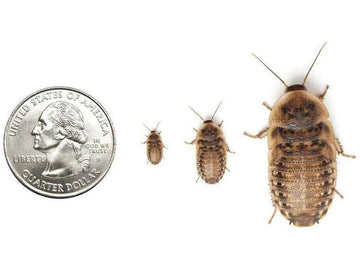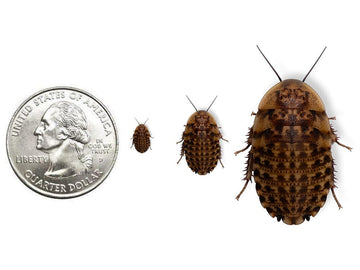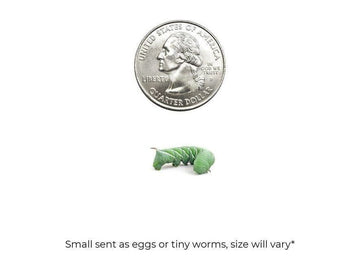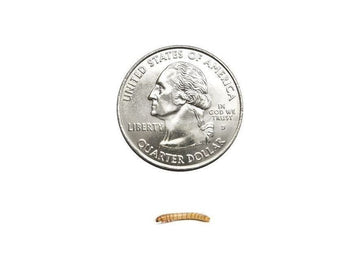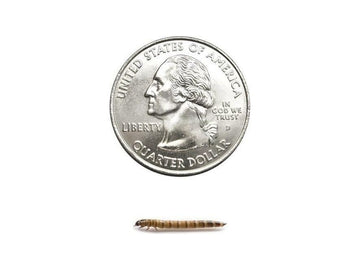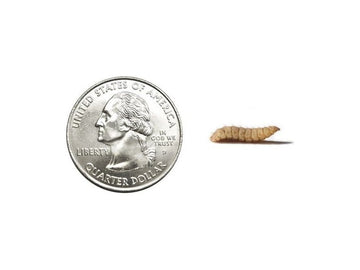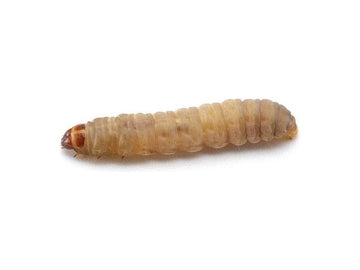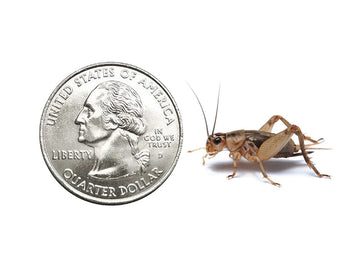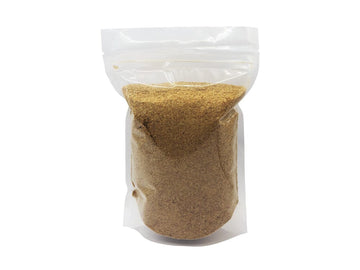Introduction
The bamboo ratsnake (Oreocryptophis porphyraceus) is a 32-36” long, terrestrial, nocturnal snake native to East and Southeast Asia. They can be found at a variety of elevations, usually in montane forests, rainforests, and bamboo thicket habitats.
Bamboo ratsnakes have slender bodies, oval heads, small eyes, round pupils, and shiny scales. Exact coloring and pattern vary by subspecies, but they’re usually red-brown to orange-red in color, with pairs of thin dark bands down the length of the body. Color may alternate between these bands. All bamboo ratsnakes have dark stripes behind each eye and one on top of the head. Some have no pattern except for the eye stripes continuing down the length of their body.
We consider bamboo ratsnakes an intermediate-level pet due to not being very handleable and requiring lots of humidity.
Enclosure
Based on our experience, we suggest a 36” L x 18” W x 18” H enclosure for these snakes. Of course, if you can get larger, we recommend it! We find that bamboo ratsnakes are very active and prefer plenty of space to explore. Ultimately, the best living conditions for bamboo ratsnakes will depend on various factors, including their needs and preferences.
Can bamboo ratsnakes be kept together?
We do not recommend cohabitation (keeping multiple bamboo ratsnakes in one enclosure).
How to quarantine a bamboo ratsnake
When you bring home a new pet reptile, it’s best practice to quarantine it first, especially if you own other reptiles.
Quarantine is the practice of isolating animals that have arrived from elsewhere or been exposed to infectious or contagious disease.
Even if you don’t have other reptiles, quarantine is still important because it allows you to closely monitor your snake for signs of illness and administer treatment. You can use your bamboo ratsnake’s long-term enclosure for quarantine or a large plastic tub. Tubs are inexpensive and easy to clean, making them the go-to option for quarantine.
Here are some general rules for quarantining your bamboo ratsnake:
- Keep the snake in a different room from other reptiles, if possible.
- We suggest using different equipment for your new bamboo ratsnake and washing your hands thoroughly between handling other animals.
- Thoroughly disinfect the enclosure often; we suggest doing this about one time per week.
- If needed, get the bamboo ratsnake checked by an experienced reptile veterinarian and treated for parasites.
- Monitor your new pet closely and watch for any symptoms of illness or disease.
- Check your snake and its water bowl closely for mites, especially if the snake is soaking. If you do find mites, treat them accordingly.
Lighting
Do bamboo ratsnakes need UVB?
While bamboo ratsnakes can survive without UVB lighting, we recommend providing it, if possible. UVB lighting helps give a clear day/night cycle, provides all of the vitamin D your pet needs, strengthens the immune system, facilitates better digestion, and other benefits.
The best UVB bulbs for bamboo ratsnakes are:
For best results, house the UVB bulbs in a reflective fixture. Position the lamp on the same side of the terrarium as the heat lamp, about 9-11” above the snake’s back if over mesh, and 12-14” above the snake’s back if not.
UVB is blocked by glass and plastic, so placing the terrarium in front of a window doesn’t count as “free UVB” — and it can make your terrarium too hot due to the greenhouse effect. Don’t forget to replace your bulb every 12 months!
We also suggest installing a 6500K T5 HO fluorescent or LED grow light to span most of the enclosure’s length. This is great for facilitating healthy plant growth if you are using live plants, and also helps create a distinct day-night cycle.
We suggest leaving lights on for about 8-12 hours daily to follow a natural day-to-night cycle. You may wish to adjust this for seasonal changes, such as running the lights longer during the summer. All lights should be off at night.
Heating
Best temperature for bamboo ratsnakes
Like other reptiles, bamboo ratsnakes are cold-blooded, which means they rely on external temperatures to manage their body temperature and metabolism. A reptile’s enclosure should offer a range of temperatures to allow them to thermoregulate effectively. To ensure your bamboo ratsnake is healthy and comfortable, provide them with an enclosure that offers a range of temperatures for effective thermoregulation.
Bamboo ratsnakes prefer an environment that is on the cooler end of the spectrum. We recommend a basking/hot spot temperature of 80-84°F, an average ambient temperature of 72-75°F, and a cool side temperature in the low 70s or high 60s. Each reptile may have different preferences and needs, so you may need to adjust these ranges up or down slightly to accommodate your pet better. It is good practice to monitor your animal and make adjustments as needed.
Overhead heating methods, such as halogen bulbs, are recommended to achieve and maintain these temperatures. However, some may opt for alternative methods such as radiant heat panels. We do not recommend colored (red, blue, etc) bulbs, ceramic heat emitters (CHE), or under tank heating, as these are not as effective.
It is essential to regulate and monitor the temperature of the heating method chosen. To do this, we suggest using a thermostat, dimmer switch, or rheostat to control the heat output. We recommend using an infrared temperature gun to measure basking/surface temperatures and a digital thermometer to monitor ambient temperatures.
Providing your bamboo ratsnake with the appropriate temperature range will ensure your pet is healthy, comfortable, and able to carry out necessary biological processes effectively.
Humidity
Best humidity levels for bamboo ratsnakes
Bamboo ratsnakes do best with humidity levels between 70-80% during the day and >90% at night.
We suggest using a digital probe hygrometer to measure humidity by placing the probe in the middle of the terrarium. This device will allow you to keep track of the humidity levels and adjust as needed to ensure that your snake is in a comfortable and healthy environment.
One effective method to increase humidity levels in your snake's enclosure is misting the enclosure with a spray bottle or automatic misting system once or twice a day. Misting the enclosure first thing in the morning and again at night, if necessary, is recommended. Alternatively, using a cool mist humidifier connected to a hygrostat can be helpful. Another way to maintain humidity levels is mixing water directly into the substrate, retaining moisture and preventing the enclosure from drying out. Just be sure to leave a portion of the substrate dry to give the snake options within the enclosure. You can also provide your snake with a third humid hide lined with moistened sphagnum moss.
Substrate
Naturalistic Options
Choosing a suitable substrate is essential when creating a comfortable and healthy habitat for your bamboo ratsnake. A great option is to provide a thick layer of natural substrate (bedding), which can cushion and help maintain humidity levels while enhancing the enclosure's overall appearance. We recommend the following substrates for bamboo ratsnakes:
- Zoo Med Eco Earth
- Zoo Med ReptiSoil
- Exo Terra Plantation Soil
- Zilla Jungle Mix
- Galapagos Blond Sphagnum Moss
Substrate mixes are also a great option. You can mix several commercial substrates or create a mixture using a combination of organic topsoil, play sand, and moss. Other self-made mixture options are possible, and you should research the subject and ratios thoroughly before starting your custom mix.
Layering clean, chemical-free leaf litter on top of the substrate can also help with humidity.
Ideally, the substrate should be at least 3” deep and completely replaced every 2-3 months. Remove poop and urates daily, along with any contaminated substrate.
Paper Towels
While various substrate options are available for bamboo ratsnake enclosures, some keepers prefer to use simpler substrates such as paper towels. These can be an effective and easy-to-maintain option for keeping your snake's enclosure clean and is especially significant when your snake is still in quarantine.
However, it is essential to remember that using paper towels as a substrate requires more frequent replacement than other options. Paper towels can quickly become soiled and develop mold if left unchanged for too long. Therefore, regularly replacing the paper towel substrate is recommended to keep your bamboo ratsnake's enclosure clean and prevent mold growth.
Ultimately, the choice of substrate for your bamboo ratsnake's enclosure will depend on your personal preferences and your pet's needs. Regardless of which substrate you choose, it is important to maintain it properly to ensure your bamboo ratsnake stays healthy and comfortable. We strongly recommend considering a loose substrate as this species does enjoy burrowing and humidity is such an important aspect of its husbandry.
What to know about cleaning a bamboo ratsnake enclosure
Replacing your bamboo ratsnake’s substrate is a good time to give the entire enclosure a good cleanout. Here are some general steps to follow:
- Remove your snake from the enclosure and put it inside a temporary, escape-proof holding container. This container should offer a hide, a small water bowl, and a thin layer of the old substrate from the enclosure for the snake’s comfort.
- Remove all substrate and decor.
- Vacuum and wipe down the enclosure to remove leftover particles.
- Apply a reptile-safe disinfectant to the floor and walls of the enclosure and let it sit for the disinfectant’s recommended contact time.
- Meanwhile, soak branches, rocks, hides, and other decor items in a disinfectant rated for porous materials for the recommended contact time.
- If required, rinse the enclosure and the accessories with clean water to remove disinfectant residue. Allow everything to dry.
- Pour new substrate into the enclosure. Mix in water until uniformly moistened but not wet.
- Arrange décor. If your bamboo ratsnake is easily stressed by change, put everything back where it was before.
- Reintroduce your snake to the clean setup.
Several veterinary-grade disinfectant options are available that are effective for both porous and nonporous materials, such as Chlorhexidine, F10SC, and CleanBreak. It is essential to carefully follow the instructions on the packaging to ensure safe and proper use. Alternatively, you can disinfect enclosures by using a diluted bleach solution. For porous materials, a 1:10 dilution is recommended, while for nonporous materials, a 1:50 dilution should be used.
Décor
How to decorate a bamboo ratsnake terrarium
We have found that providing environmental enrichment for your bamboo ratsnake can significantly improve its quality of life by keeping it stimulated and engaged. Adding carefully selected décor items can encourage natural behaviors and exercise, leading to a happy and healthy pet.
Bamboo ratsnakes are terrestrial, everything will need to be at or near ground level. Adding clutter will help provide hiding places for your snake to help it feel more secure. Be sure to avoid items with sharp edges. Some great options to include in your enclosure are:
Food
What to feed to a bamboo ratsnake
Bamboo ratsnakes are carnivorous, meaning they must eat whole animal prey for proper nutrition. Here is a basic feeding schedule based on snake size:
- Juveniles should be fed once every 4-7 days.
- Adults should be fed once every 7-10 days.
Prey items should be 5-10% of the snake’s weight and/or no wider than the snake at its widest point.
You can choose to feed live or frozen prey. We recommend using frozen/thawed food when possible, as they are easier to find and store while eliminating the risk of the prey injuring your snake. If you choose to feed live prey, we strongly recommend monitoring your snake during feeding so that you can quickly remove the rodent if needed. Frozen prey should be thawed in a BPA-free plastic bag in warm water until it reaches ~100°F. Use a pair of soft-tipped feeding tweezers to offer it to your snake.
One of the keys to great nutrition is variety, so aside from offering mice and rats, quail, chicks, and quail eggs can also add diversity to your snake’s diet.
Where to get feeders for your snake
Most pet stores sell frozen mice and rats in various sizes to feed snakes. This option is convenient because you can buy prey one at a time. However, the variety is most likely limited, and the price per rodent is typically relatively high.
You can purchase feeders from an online breeder for your snake if you prefer a more convenient option. With the help of the internet, you can access a wide range of prey options. However, it's worth noting that these breeders typically require bulk purchases, resulting in a lower cost per rodent but higher upfront expenses. Moreover, shipping costs can be expensive due to the perishable nature of the feeders. We suggest buying several months' worth of supply at once to avoid paying too much on shipping fees.
By utilizing social media, you can often find a local feeder breeder to supply your rodents, and many can offer both live and frozen/thawed. Some keepers choose to breed their rodents. While this is an option, it is work-intensive as you will have rodent enclosures that need regular cleanings.
Providing drinking water for bamboo ratsnakes
Of course, don’t forget a large water bowl for your snake to drink from and soak in! Change the water daily and scrub the bowl with a reptile-safe disinfectant weekly or whenever it becomes soiled.
Handling
How to handle your bamboo ratsnake
Reptiles generally don’t appreciate petting and handling in the same way that dogs and cats do. Bamboo ratsnakes generally prefer to be left alone rather than handled regularly, and can be skittish. Be gentle when picking up your snake. It is best practice to pick it up from the side or below versus above. Support as much of its body as possible, and NEVER pick it up by its tail, as this can damage its spine.
Health
When should you take a bamboo ratsnake to the vet?
Dogs and cats aren’t the only pets who need veterinary care — snakes get sick and need professional help like any other pet. If you notice that your snake has any of the following symptoms, make an appointment with an experienced reptile vet right away:
- Noisy breathing
- Mucus discharge from the mouth/nose
- Unexplained weight loss
- Large patches of missing scales
- Discolored belly scales
- Swelling or bumps anywhere on the body
- Sudden, unusually aggressive behavior
This care sheet contains only basic information. Although it’s a good introduction, please further your research with high-quality sources. The more you know, the better you will be able to care for your pet!


